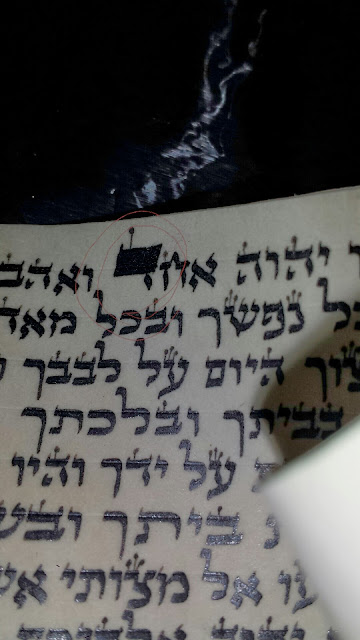Popular posts from this blog
Klaff Tanning question:
By
Rabbi Eli Gutnick
-
I received this question via email. I am not really a klaf expert, I was wondering if anyone could answer this question: Dear Rabbi Gutnick, I am writing to you because a good friend of mine has put the idea into my head that the klaf in my tefillin were not really tanned and therefore are not kosher. He referred me to Megilla 19a re diftera. From the research that I have done so far, it seems that the klaf that is used today is tanned only with a lime wash. On all of the tanning websites I’ve seen so far, they say that the lime doesn’t accomplish tanning but only the removal of the hair and some other pre-tanning effects. Would you be able to explain to me or refer me to a website that explains how the tanning process that is used today takes the hide out of the category of diftera? Thank you very much.
Rabbi Reuvain Mendlowitz clarifies his position on Ksav Chabad (and my final thoughts)
By
Rabbi Eli Gutnick
-
Last week I posted some thoughts in response to a public lecture given by Rabbi Reuvain Mendlowitz regarding Ksav Chabad (the Alter Rebbe's ksav). I felt he did not represent the issue fairly, and since I had received questions about it from a number of people I felt it made sense to write a general response. After I posted my response on this forum, Rabbi Mendlowitz reached out to me by email and we ended up having a respectful and productive email exchange regarding the relevant issues surrounding Ksav Chabad. His position is a lot clearer to me now, and I think he also took certain things on board that I clarified with him. The purpose of the Stam Forum (at least back in it's heyday before all the whats app groups took over) was to connect sofrim from around the world, to promote achdus and build bridges, as well as to offer support and advice. In that spirit, I felt I should write a follow up post, to clarify some of the issues and misconception...


Kosher
ReplyDeletePasul.
ReplyDeleteRegel shorter than the Gag. Maybe a Kosher Yud...
Its a machlokes when it's the big daled of echad. Lemaysa it's fixable
DeleteThe Tag is bigger than the Regel. Maybe a Lamed?
ReplyDeleteI can't believe anyone would mistake this for anything other than a dalet.
DeleteOf course not. But stylistic letters are not kosher, even though they're unmistakable to us in this generation. There are rules. a Yud with three tails may still look a Yud to us, but it's not a Yud, leHalacha.
ReplyDeletesee biur halacha page 88
ReplyDeleteמלא או"ק- ואם זה הכתב הוא מכתב בינוני לכאורה דאין מועיל אם כמלא או"ק הוא מכתב קטן דאל"כ אין שיעור לדבר אבל אם זה מכתב גדול נראה דבודאי מהני אם כמאו"ק הוא מכתב בינוני
I have never understood this biur halacha , what is "small ksav and what is medium ksav and what is big ksav, big and small is a relative issue.
I must thank Rabbi Nuson Oberlander for explaining this biur halacha to our situation- in a sefer torah where there is reg ksav and then we have gdolos and ktanos -the biur halacha holds that os ktana from the reg ksav is good for an os gdola however a short regel for reg ksav of that s"t cannot be measured with an os ktana (ktana and gedola mean the osios from mesora big and small)
A regel must be a minimum of a maleh os ketana, which is a kulmus, according to the more lenient opinion (unlike the M"B who says maleh os ketana it means a Yud - kulmus plus a bit) and this leg is even less than a kulmus of this ksav. Do we judge the length of the regel by this larger letter's kulmus or by the kulmus of the standard size letters? As R' Eli said, lemaaseh, it can be fixed however, the level of kashrus may be affected.
ReplyDeleteSo why not just consider the thickness of the regel as the עובי קולמוס and the gag as very tall?
ReplyDeleteSorry, I don't follow. The regel must be at least the height of the head (or the head and a bit according to the MB). The question in this case of a large letter is whether we require the height of the regel to be at least the height of the head of the same letter or must it be at least as tall as the height of the head of the normal letters.
ReplyDeleteMaybe one day we can discuss in person IYH.
Delete